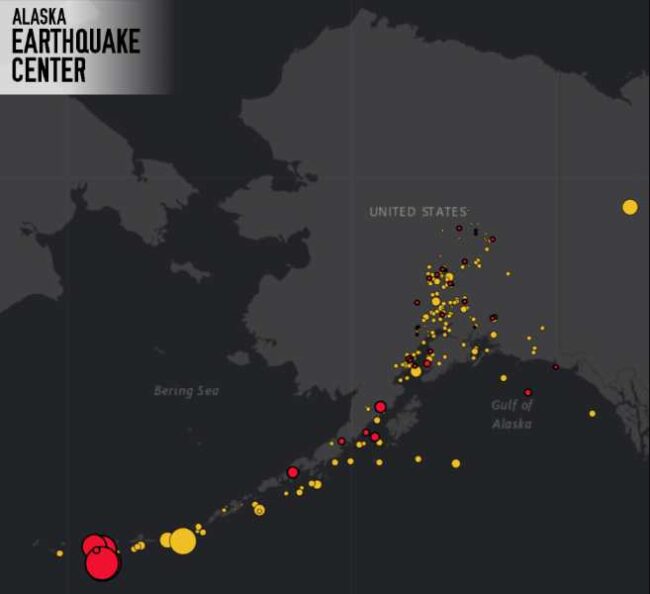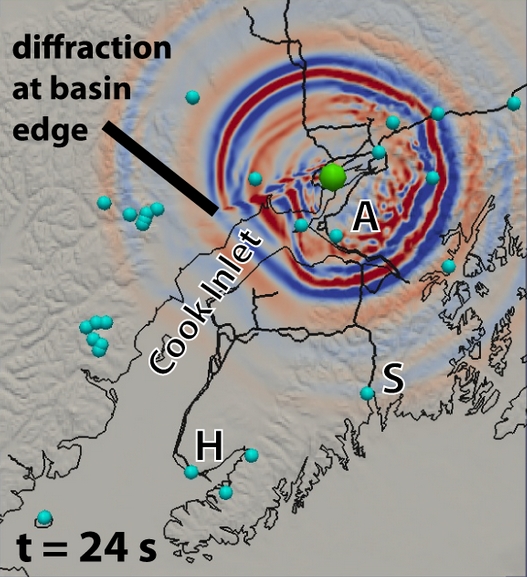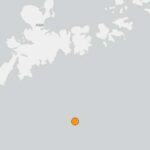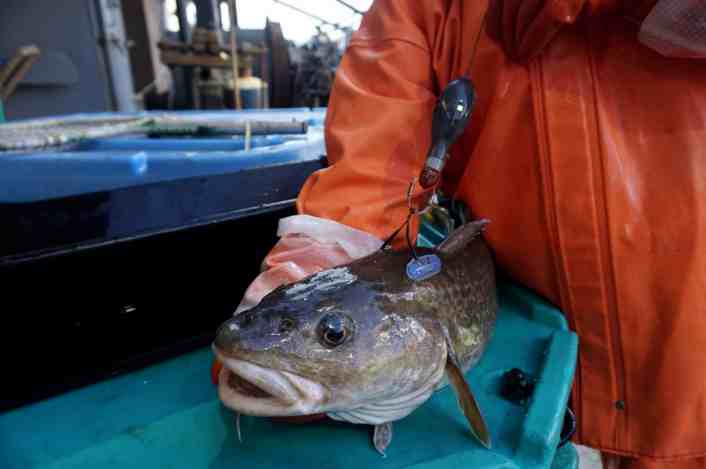
Mid-day on Sunday, December 8, 2024, a magnitude 6.3 earthquake was recorded southwest of Atka Island in the western Aleutians (Figure 1). The earthquake triggered interest because of its significant size. Because it was offshore and no damage was reported, it did not, on its own, raise concern for the AEC. A handful of people reported feeling light shaking from this event, which happened at a depth of about 11 miles (18 kilometers).
The activity that followed within the hour—a couple of events above magnitude 5—was expected aftershock activity. But then, starting at about 3 p.m., two more earthquakes above magnitude 6 happened within 20 minutes of each other. This is not a typical mainshock–aftershock sequence; it is a swarm—a cluster of several earthquakes of about the same magnitude.
Although Sunday’s swarm includes several significant earthquakes, the chances that they are forerunners of something larger is statistically quite low, says Alaska Earthquake Center director and state seismologist Michael West.
“Swarms of moderately large earthquakes are common in the Aleutians and do not necessarily portend anything more substantial,” says West. However, he adds, “Because this area has been in, or on the edge, of numerous large historical earthquakes, we are keeping close watch on it.”
Setting of the Atka swarm
The earthquakes effectively trace out the top of the subducting Pacific plate. Except for the number of large earthquakes in this swarm, they are fairly typical events that are taking place at the subduction interface between the downgoing Pacific and overriding North American plates.
The larger earthquakes, for which seismologists determine the type of fault motion, were all caused by thrust motion on the subduction zone. Again, this is typical for the convergent motion between the Pacific and North American plates.
While small swarms of earthquakes in the subduction zone along the Aleutian chain happen on average every couple years, there was a similar swarm in May 2024, albeit about 350 miles (550 km) to the east. Uneven strain along a particular section of the subduction interface could result in a swarm rather than strain release in one large event. More commonly, we see a single large earthquake followed by many aftershocks.
Monitoring seismic events helps the Alaska Earthquake Center understand the complex nature of earthquakes along this major plate boundary in Alaska. Because of the unusually high number of moderately sized earthquakes in this swarm, AEC is keeping an eye on the region. AEC expects that aftershocks, particularly of magnitudes 5 and below, will continue from this sequence in the days and weeks to come.
(37 quakes have occurred in the area since Sunday)
[content id=”79272″]






